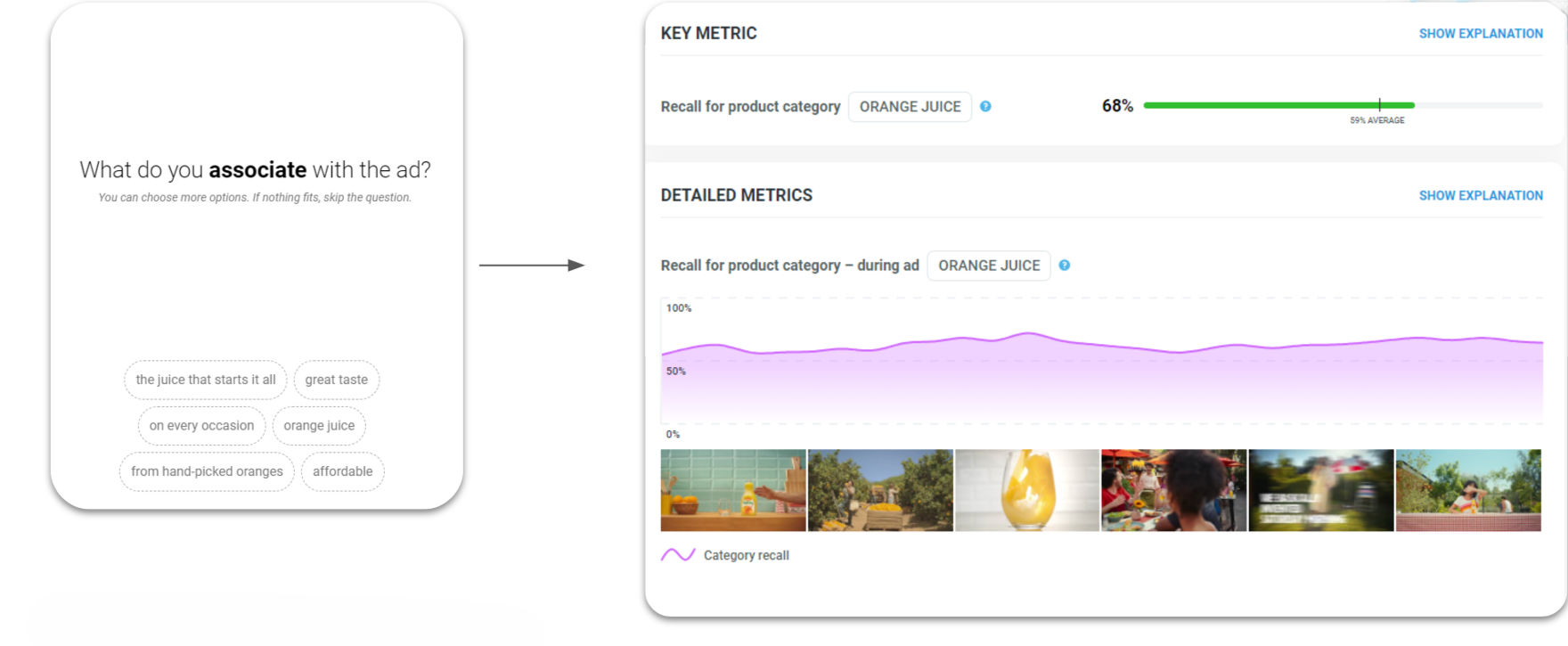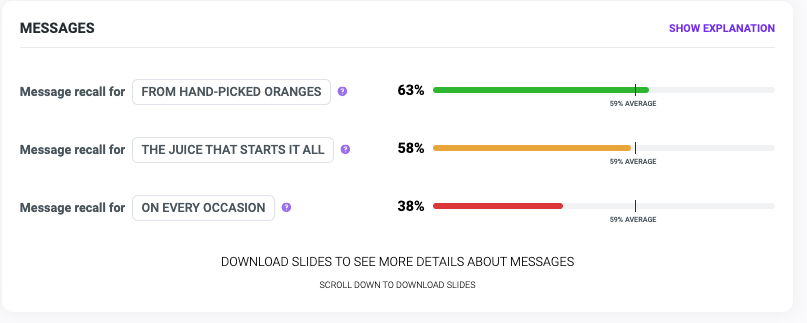What is Need, and how do we measure it?
This article covers:
What is Need?
In addition to branding and emotion, customer need is crucial in any campaign. Customers choose your brand only when they have an unmet need: I’m craving something sweet, I need new shoes, I want a quick lunch, I want a fast car.
What should the customer recognize in the campaign?
Recognizing the right general situation (category) when viewing the creative is crucial. As a customer, I should immediately identify sweets, shoes, a quick lunch, or a car in the campaign. This is because the general situation (category) serves as the entry point for customers to your brand.
If your brand wants to be salient, it must first and foremost build a strong connection to the category. This is especially important for small brands with low awareness that are not yet associated with the category.
The second part is the specific message you want to convey to customers during the campaign: sweets for a trip, affordable shoes, a quick lunch with kids, or a fast car. You can define up to three messages, usually based on the tactical goals of the campaign. Clearly outline the messages you want customers to associate with your brand.
Specific messages become particularly important when your brand is already strongly associated with the desired category.
How do we measure Need?
As the key metric, we use category recall for impact tests and video pre-tests, and category fit for concept tests. Additional metrics, such as message recall and brand links, help us understand the full picture of how the ad presents customer needs. That’s why we prioritized category over other communicated messages when designing the KPI for the Need chapter.
How do we measure category and message recall in impact tests and video pre-tests?
We measure category and message recall twice—after respondents watch a randomly selected 5-second clip from your ad and again after viewing the full ad.
After each viewing, respondents are asked, “What do you associate with the ad?” They are prompted with the messages you provided, along with the product category or buying situation. Respondents can select multiple options or skip the question if they feel none fit.
The results show overall recall for the product category and a detailed category recall curve that illustrates recall fluctuations throughout the ad. We compare these scores to benchmarks (learn more about benchmarks).

For message recall, the results include the percentage of respondents who recalled each message after the video ends.

How do we measure category and message recall in impact tests and video pre-tests?
We measure category and message recall twice—after respondents watch a randomly selected 5-second clip from your ad and again after viewing the full ad.
How do we measure category fit in concept tests?
The respondents are presented with the creative concept, followed by a list of associations, including the product category or the category’s buying situation. We ask what they associate with the concept, and respondents can select multiple options or skip the question if they feel none fit.
When testing is complete, we look at the percentage of the sample that associated the product category (or buying situation) with the ad. We compare this score to benchmarks (learn more about benchmarks).
How do we measure brand links?
We measure brand links by presenting respondents with your brand alongside competitors and asking them to assign the associations you provided (e.g., “affordable,” “high-quality ingredients”) to each brand. Respondents drag each association to the brand they feel it best represents.
The results are shown in a table with the percentage of respondents who linked each association to your brand versus competitors. The total for each association sums to 100%, offering a clear view of your brand’s perception in comparison to others.

How to get Need right?
Choose only one or two messages
Focus less on quantity of messages, but rather on quality. Pick just one or two messages, present them clearly and let them play out in more frames.
Show message by various ways
Doing this has a positive impact on message recall. Use text cards, simple animation or voiceover. Use more options for higher impact.
Be Specific
Use specific brand assets to express the message. If you don't have any assets, express the message in a specific way. For example, don’t just say your brand stands for quality. That’s a general statement that any brand can make. How does your brand specifically address quality?
